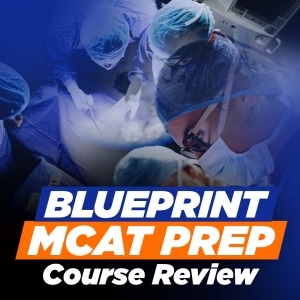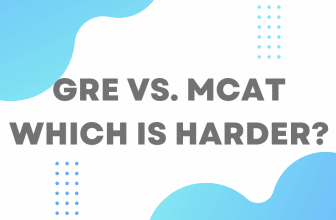
The Medical College Admission test (MCAT) is one of the defining aspects of becoming a doctor. The AAMC (Association of American Medical Colleges) administers this exam and tests future medical students on various subjects, including biology, chemistry, psychology, sociology, and physics.

All aspiring doctors in the United States must take the MCAT and submit an MCAT score when applying to medical school.
Keep reading to learn all about the AAMC MCAT breakdown.
This information can help you study, get a great score on the MCAT, and get into your preferred medical school. As you prepare for the MCAT, it is vital to understand the MCAT sections breakdown and have a clear study plan.
What Are the Four Sections of the MCAT?
The MCAT has four sections: Chemical and Physical Foundations of Biological Systems; Critical Analysis and Reasoning Skills; Biological and Biochemical Foundations of Living Systems; and Psychological, Social, and Biological Foundations of Behavior.
The four sections cover the content you learned during your pre-med courses while pursuing your undergraduate degree. You must know biology, biochemistry, organic chemistry, sociology, and general and introductory psychology content.
The AAMC scores each section on a 118-132 scale, with the average score being 125. All sections are essential to medical schools, and you will want to do well in all four areas of the MCAT.
The sections on the hard sciences have ten sets of 4-6 passaged-based questions. You must read and interpret each section and use the information to answer the associated questions. In addition, there are 15 miscellaneous questions in each complex science section.
What Are the Topics Covered in Each Section of the MCAT?
Let’s now review the topics covered in each section in this MCAT sections breakdown. Each of the four sections of the MCAT has multiple subsections that cover more specific content areas.
The number of MCAT questions per section is always 59, except for the Critical Analysis and Reasoning section which has 53.
Here is a list of those subsections and the topics covered in each.
The Chemical and Physical Foundations of Biological Systems section covers general and organic chemistry and physics. It also includes some biochemistry content. This MCAT section tests your understanding of the following
- chemical reactions
- properties of matter
- chemical bonding and atomic structure
- kinetic molecular theory
- thermodynamics
- solution chemistry
- acids and bases
- chemical equilibrium
You have to apply these concepts to the human body and living systems. This MCAT section includes 59 multiple-choice questions, and you have precisely 95 minutes to complete it.
In the Critical Analysis and Reasoning Skills section, you must demonstrate your ability to read complex passages, understand the main ideas and themes and analyze arguments. It is important to practice reading and comprehension skills as you prepare for the MCAT.
The second section of the MCAT is the only section that does not have 59 questions. The Critical Analysis and Reasoning section has 53 questions, and you have an hour and a half to complete them. The analysis and reasoning section is similar to standardized tests like the SAT or ACT.
The Biological and Biochemical Foundations of Living Systems section covers biology and biochemistry content. You must show your comprehension of the following:
- cell biology
- genetics
- evolution
- protein synthesis
- metabolism
- ecology
- organismal biology
You must know how living organisms grow, reproduce, metabolize, and adapt to stimuli. Like the Chemical and Physical Foundations section, the Biological and Biochemical section of the MCAT has 59 multiple-choice questions, and you have 95 minutes to take this section.
The section on the Psychological, Social, and Biological Foundations of Behavior focuses on the following topics:
- introductory psychology,
- sociology, and
- biological bases of behavior.
You will be expected to have a strong understanding of
- behavioral genetics
- sensation and perception
- learning and cognition
- motivation and emotion
- development across the lifespan
- personality and individuality
- social structures and processes
- cultural diversity in psychology
- psychological disorders, and treatment
You must also demonstrate your knowledge of different research methods and statistics. This section also has 59 multiple-choice questions. Like the other 59 question sections, you have 95 minutes to answer them.
How Long Is the MCAT?
The MCAT is an extended test. The MCAT length with breaks is about seven and a half hours. It includes multiple choice questions, as well as essay sections.
The actual MCAT test time is six hours and fifteen minutes. There is a 14-minute certification and tutorial process at the beginning of the test and then a 95-minute test section. After the first test section, you have an optional 10-minute break.
After the second 95-minute test section, you have an optional 30-minute break. There is a 10-minute break after the third test section. Finally, at the end of the test, there are eight minutes of void questions and an optional survey.
How Much Does It Cost To Take the MCAT?
The standard registration fee to take the MCAT is $330. If you’re eligible for the Fee Assistance Program, the cost is $135. If you need to reschedule, you’ll have to pay the associated fees.
However, many people spend much more on the MCAT. People can spend thousands of dollars taking the MCAT between multiple tests, and study materials. That’s why it’s important to get the best MCAT prep course to ensure you’re prepared the first time.
Passing your MCAT test requires that you use the right study courses and other resources. Choosing a course that suits your needs can be a little tricky. You have to consider a number of factors such as flexibility, cost, course relevance and accessibility, and intense subject coverage, among other things. All these issues bring us to the Kaplan MCAT Review course. We are going to find out why Kaplan is the right one for your MCAT test prep. But first let’s check out some little background information on Kaplan.
Studying for the MCAT is a difficult task on its own, so it shouldn’t be as hard as it is currently to find a suitable prep course in order to help you study. Fortunately, Blueprint MCAT Prep understands how difficult and stressful the mere process of finding the right MCAT exam prep study materials can be.
- Quality, Quantity, Affordability: When looking for an MCAT prep course, students are usually forced to choose two of these three features. It’s easy to find a course that’s affordable with a lot of low-quality materials, affordable with a small amount of high-quality materials, or an expensive course with lots of high-quality study materials. However, Blueprint MCAT Review manages to offer an affordable package with quality and quality.
- Peace of Mind: As previously mentioned, there’s no excuse for a MCAT prep course to be stressful when the exam itself causes enough anxiety on its own. Therefore, some of the most helpful features Blueprint MCAT provides are the ones that reduce the amount of pressure on students’ shoulders. These features include the ample free study materials and their score increase guarantee.
- Supplementary Materials: For the vast majority of students who enroll in this MCAT course, the materials it provides should be sufficient to prepare them for exam day. However, there may be some of you who need just a little bit more in order to feel fully prepared. The good news is that Blueprint MCAT offers lots of extras to meet this exact need, such as additional practice books and personal tutoring packages.
- Mobile App: Not every student has the time in their busy schedule to sit down in front of their computer and go over their study material. While they may be able to do so once or twice a week, there are some who simply learn better on the go through the use of their mobile smart devices. And while Blueprint does their best to ensure that the majority of their study materials are compatible with these devices, the lack of a dedicated mobile app is still disappointing.
FAQ’s
These are some frequently asked questions about the MCAT section breakdown.
What is the difference between a section and a subsection of the MCAT?
A section is a larger category of topics, while a subsection refers to specific subtopics within that section. For example, there may be organic chemistry and biochemistry subsections in the Chemical and Physical Foundations of Biological Systems section.
Is it possible to retake certain MCAT sections if I don’t achieve my desired score on them?
No, you cannot retake individual sections of the MCAT. You can, however, retake the entire MCAT if you are not satisfied with your score. You are allowed to take the MCAT up to three times in one calendar year and a maximum of four times in two years. You can’t take the MCAT more than seven times in your lifetime.
Wrapping Up
Now that you understand the what each section of the MCAT is, it’s time to start studying and preparing for the test. Remember to review all four sections and practice timed essay writing and multiple-choice questions. Good luck on your journey to becoming a doctor! Thank you for reading about the MCAT section breakdown.






